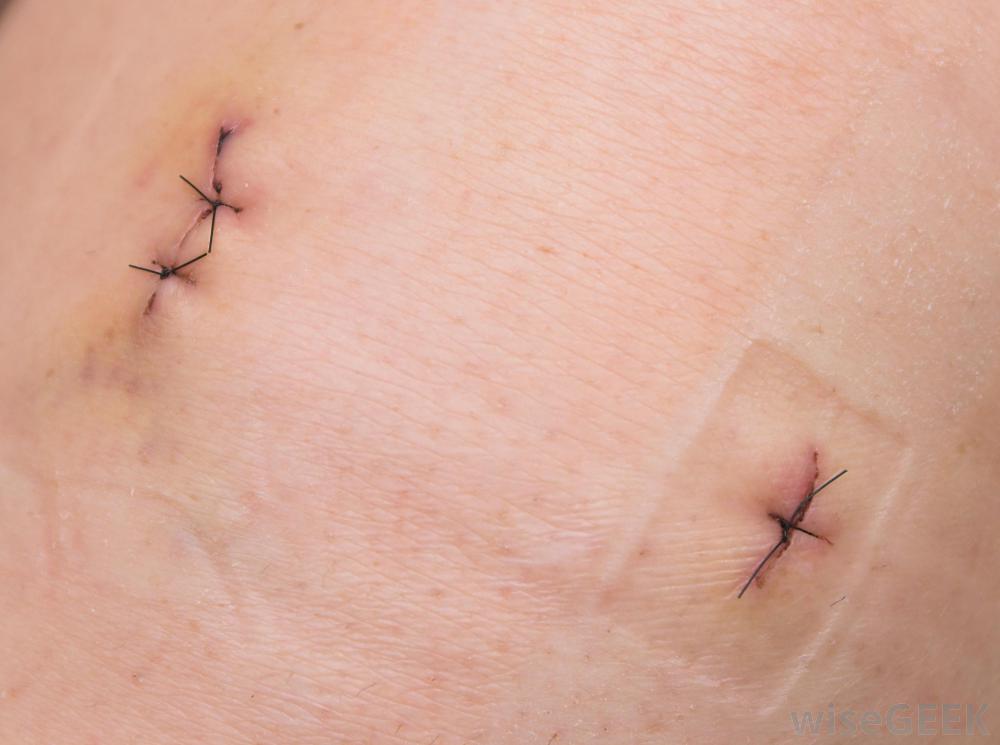5 Super Effective Ways to Take Care of Your Stitches
You get a cut or go in for surgery at the doctors. She puts in stitches. You think everything’s all sewn up now, right?
Not quite. Whether they’re from an accident or even from surgery, you need to know how to take care of these new stitches. That way, you or your little one can heal quickly and properly.
What are Stitches?
You can think of stitches in your skin like you do those in your clothes, thread that holds things together. They’re made from various materials, such as nylon or silk.

Some, such as the ones in the mouth, dissolve by themselves. Others will need to be taken out later.
Your stitches are important because they lower your chances of more bleeding or infection. They also reduce scarring.
Taking care of your stitches
After you got your stitches, your doctor or her nurse should have given you instructions on how to care for them and told you when they’ll come out. That may be a little as a few days and probably no more than 2 weeks. It depends on how deep your wound was, where on your body you got it, and the kind of stitches you got.
If you didn’t understand any of the directions you were given, be sure to call your doctor back.
The first day: Keep your wound area dry for the first 24 hours after the doctor sewed in the stitches. You’ll lower your risk of infection.
Follow your doctor’s instructions on when you can start cleaning the area and how to do it. Usually, you have to wait at least a day before cleaning.

Afterwards: You should wash off dirt and the crust that forms around the stitches. That lowers your chances of having a scar. You may need to place a bandage on it if the wound leaks clear, yellow fluid.
After washing, be sure to dry the area with gentle pats of a clean towel.
Here are some other tips on caring for stitches:
- Resist the urge to scratch: You could pull them out.
- Don’t swim: Wait until your stitches are out before you go into the pool or pond.
- Do take showers: If you can control the spray and protect your wound in a shower. Use a softer setting if you can. When your stitches get wet, pat them dry with a towel.
- Pass on contact sports: you want to avoid bumps and bruises to that tender area.
- Keep your child out of dirty places: It’s a tall order, but try to keep your child out of mud, sand, and paint. That could make the wound get dirty and maybe cause an infection.

Watch for Signs of Infection
Even as you continue to take care of your stitches, watch for any signs of infection. They include:
- Increasing pain
- Redness around the wound that gets worse, not better
- Swelling
- Pus or bleeding
- A bed smell coming from the area
- Fever
Getting Stitches Taken Out
Some kinds of stitches dissolve on their own. Other times, you’ll need to return to the doctor to get them taken out.
When you should do this depends on the type of cut and where it’s located. You usually need stitches that are over the joints, such as your knees and elbows, to stay in for longer than in other places.
With stitches, it’s harder putting them in than taking them out. Your doctor or nurse will cut the stitch at the knot, and then pull out the little thread. You might feel some tugging, but it shouldn’t be painful. It takes less time to remove them than it does to put them in.
What about Scars?

You or your child may worry about the scar being left behind after your stitches are out. Here are a few things you can do to make them less visible:
- Protect yourself from the sun. Damaged skin is much more likely to be discolored by the sun for up to 6 months after an injury. Keep covered with a hat or clothing as much as you can. Use sunscreen to lessen any darkening of the scar, but don’t out any on until 2 weeks after the cut has healed.
- Silicone sheets or gels. Products with silicone may help soften scars and improve the color if you use them at least 12 hours a day.
- Onion extract. Your doctor might suggest a cream that contains this extract.
- Use your fingers and rub the scare in circles with medium pressure. This might help your scar to soften and flatten faster.


